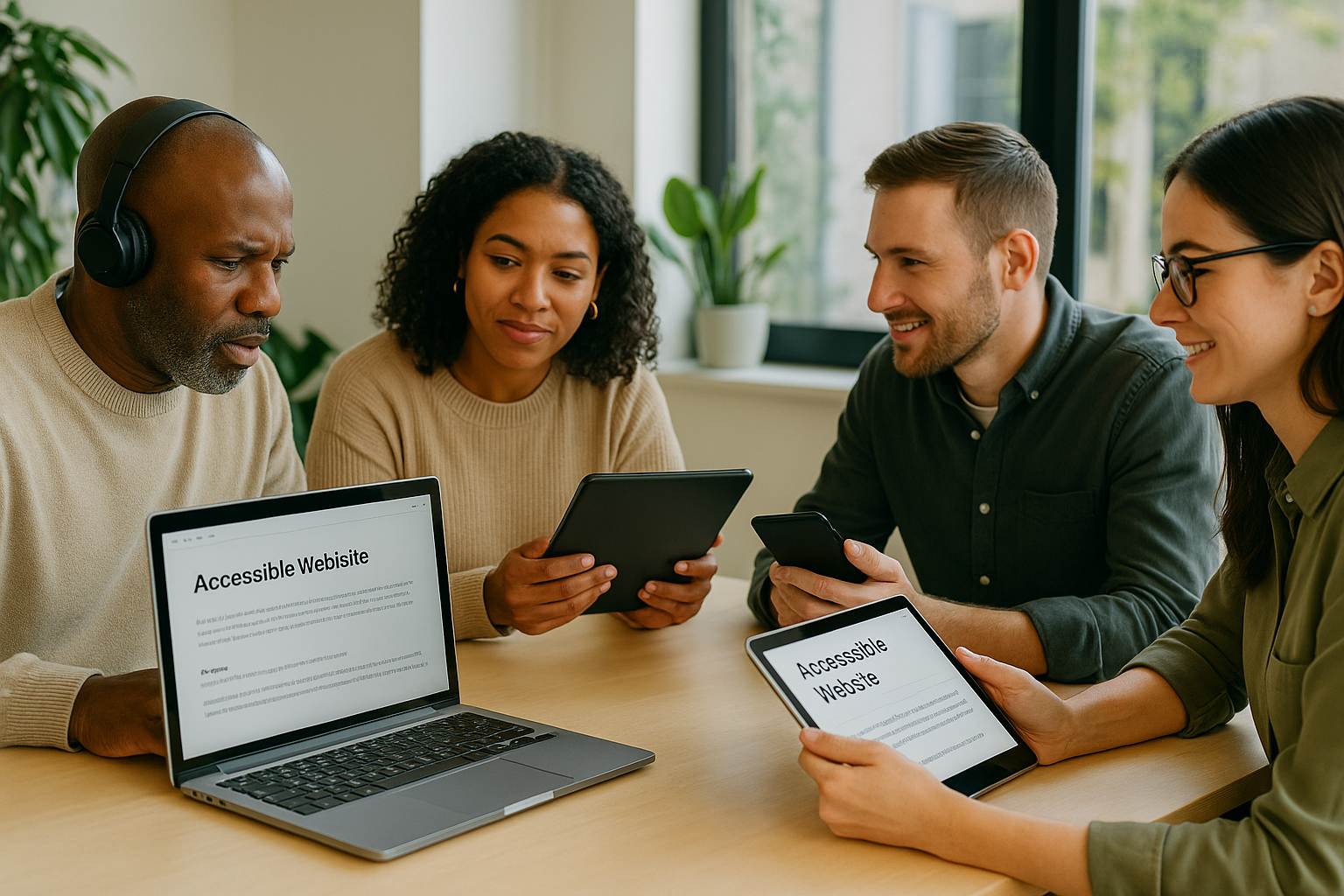You’ve lost potential clients because your website was hard to use. Maybe the text was too small or the navigation didn’t make sense. These accessibility problems push people away every single day, and they’re costing you money.
Web accessibility means building sites that work for everyone, including people with disabilities. When you get this right, you’re doing three things at once:
- building trust with visitors who notice the effort,
- reaching audiences your competitors ignore,
- improving your search rankings because Google rewards sites that deliver a better user experience.
We’ll show you what accessibility guidelines actually cover, how to build them into your design process, and which changes make the biggest difference.
Let’s start with the basics.
Web Accessibility Guidelines: What They Mean for User Experience
Now that we’ve established why people leave inaccessible sites, let’s break down what accessibility guidelines actually cover.
The Web Content Accessibility Guidelines (WCAG) serve as the international standard, but don’t let the formal name intimidate you. They’re really just a roadmap for building websites that work for everyone.
Let’s break it down:
Inclusive Design for Real People

Your website needs to work for people who can’t see small text, who can’t use a mouse, or for people who process information differently. Visual impairments, motor limitations, and cognitive differences affect how millions of people browse the web every day.
So, when you build with inclusive design principles, you’re making a site that actually functions for your entire audience.
How Assistive Technologies Work With Your Site
Screen readers are one of the most common tools people use to navigate the web. They announce what’s on the page to blind users, reading everything from headings to button labels out loud.
If someone can’t use a mouse, keyboard navigation becomes their primary way to move through your site. Voice controls work similarly to help people with motor impairments complete tasks without clicking or typing.
The catch? These assistive technologies only work if your site is built to support them. The good news is the fixes are straightforward:
- Add proper headings so screen readers can jump between sections.
- Make sure every button responds to keyboard commands.
- Include alt text so images make sense to everyone.
How Accessibility Expands Your Audience
Did you know, about 16% of people worldwide live with some form of disability? That’s over a billion potential customers you might be excluding right now. When your site works for them, you’ve opened up serious market reach.
There’s another angle to consider here, too. Search engines can’t watch your videos or admire your graphics. They read your site the same way a screen reader does, i.e. through text, structure, and semantic code.
So when you add captions to videos, write descriptive alt text, and organise content with clear headings, you’re helping both users and search engines understand what you offer.
But how do you implement all of this?
Building Accessibility Into Your Design Process
Fortunately, you don’t need to rebuild everything from scratch. The trick is building accessibility into your workflow from the beginning. Because when UX designers treat it as an afterthought, they waste time fixing problems that could’ve been prevented.

Let’s walk through what this actually means for your design process.
Phase 1: Research Your Audience
You start with user research that includes people with different abilities. While some use screen readers, others rely on keyboard accessibility because they can’t operate a mouse. So if you test only with people who match your average customer, you’ll miss accessibility problems until it’s too late to fix them easily.
Phase 2: Design and Build
Check if your background colours provide enough contrast with text, which makes content readable for people with visual impairments. Then move to your navigation menus and make sure they work when someone tabs through them with a keyboard. You’ll also need to write alt text for images that explains what people need to know.
For any videos you publish, add text transcripts so people who can’t hear the audio still get the full message. Search engines read your site the same way assistive technologies do, so accessible web design improves your rankings while helping more users access your content.
Phase 3: Testing
Try moving through your site using only keyboard commands. Then, turn on a screen reader and listen to how it announces your pages. You should also get real user feedback from people who depend on assistive technologies daily.
Through our practical knowledge working with various clients, we’ve watched user testing uncover problems that seemed impossible to predict. And frankly, you won’t find these until you test with actual people, and the development process stalls when you discover them after launch instead of before.
Now let’s talk about how this benefits your business.
How Digital Accessibility Builds Trust and Expands Your Reach
Digital accessibility opens doors to customers your competitors are ignoring while building genuine trust with everyone who visits your site.

When you offer equal access to all users, people notice. They can tell when a business has thought about their needs, and that perception influences whether someone trusts you enough to become a client.
As we’ve mentioned before, a significant portion of the population lives with some form of disability. So when you build with accessibility in mind, you’re essentially expanding your market reach to include this diverse range of potential customers with real buying power.
Aside from that, some regions also have legal requirements around digital accessibility now. The European Accessibility Act sets standards for certain services. But focusing only on compliance misses the bigger opportunity.
The real value is in reaching more users and improving user satisfaction across the board. And people who can actually use your site are far more likely to stick around, explore your services, and eventually convert.
Bottom line: Accessible design pays for itself through better engagement and higher conversion rates.
Don’t Leave Potential Clients Behind
Remember when we talked about people clicking away from confusing sites? You can stop that from happening. We’ve covered what accessibility guidelines mean for user experience, how to build them into your design process from the beginning, and why accessible design expands your reach while building trust with users.
Ready to improve your site? Start with alt text, colour contrast checks, and keyboard navigation. And if you need expert help, visit geckotag.me to build a site that welcomes everyone and wins more clients online.



